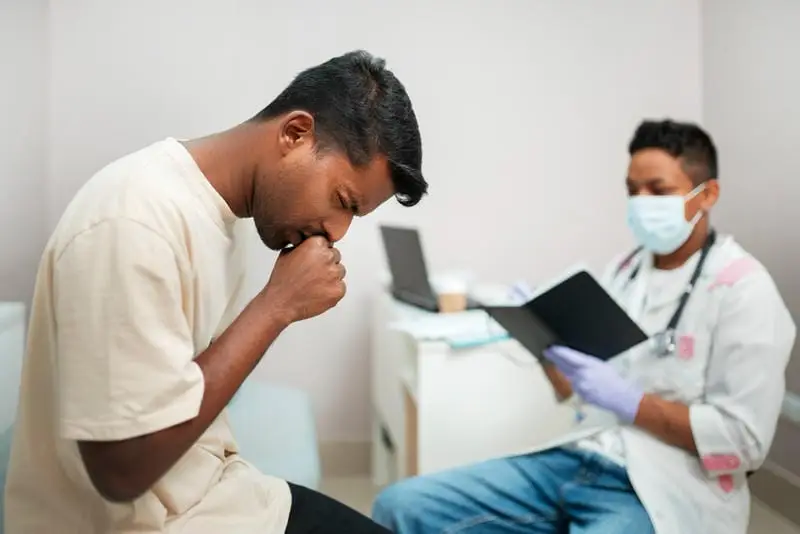- Published on: Aug 30, 2021
- 2 minute read
- By: Dr Rakesh Rai
What Are The Causes Of Liver Cirrhosis?
"What are the causes of liver cirrhosis?"
Several diseases can lead to cirrhosis of the liver, which is characterized by hardening and scarring to the organ's tissue. These include alcoholism, hepatitis C, chronic hepatitis B, and fatty liver disease.
Smoking, drinking too much alcohol, and hepatitis infection. Smoking and excessive drinking can lead to liver cirrhosis because they reduce the amount of oxygen and nutrients delivered to the liver. Smokers also have an increased risk of developing alcoholic hepatitis if they drink as well. Diseases such as chronic pancreatitis, a condition often caused by alcoholism, may also cause cirrhosis. Hepatitis infections are one prime example; people who will contract this type of virus have a greater likelihood of developing the liver disease later in life than those who haven't been exposed to it.
Cirrhosis is a condition that results when healthy cells inside the liver are replaced by scar tissue because of an injury, infection, or chronic disease. This eventually reduces the functionality of the organ and may eventually lead to liver failure, which in many cases can necessitate a transplant. Prevention and early detection for common conditions associated with liver cirrhosis should be pursued such as hepatitis B or C or Wilson’s Disease (a rare genetic disorder). Treatment options vary depending on the severity of cirrhosis but may include alcohol abstinence, medication to promote regeneration of diseased hepatocytes (specialized cells in the lining), surgery to remove any pools of blood/scar tissue from within the abdominal cavity that would otherwise compress other organs.
There are many possible causes, including genetics, diseases of the biliary tract system, drugs, and alcohol abuse. The cirrhotic liver has less elasticity than a typically healthy liver. This can lead to ruptured blood vessels within the organ that will cause bleeding into the cavity of the organ. The result of this bleeding is swelling and destruction of cells in that area; it's also called 'cirrhosis.' As cirrhosis progresses, there are limits to how much your damaged liver can work towards cleansing and detoxifying your body by removing poisons or toxins from the food you eat - because a damaged liver cannot produce enough bile that helps aid digestion.
There are many causes for liver cirrhosis, so it's not as though we can generalize. Some symptoms of liver damage include jaundice (yellowing skin) and frequent urination. Most signs of liver failure occur only in the advanced stages when the organ becomes too large to be compensated for by other organs or systems of the body. One should also note that alcohol is a primary cause of cirrhosis and often comes with other complications such as malnutrition, high blood pressure, and diabetes.
A) Symptoms of liver cirrhosis include jaundice, bruising easily, abnormal swelling in the legs and abdomen.
B) Hepatitis is a potential cause of liver cirrhosis.
C) Liver cancer can also produce symptoms related to liver cirrhosis such as enlarged lymph nodes or fluid buildup in the abdomen.
D) People who have eaten too much alcohol for many years are more likely to develop chronic alcohol abuse which destroys the cells on your liver causing it to stop functioning for good resulting in death. (this answer would be an ideal opportunity for advertising a medical consultation site but just mentioning their name could result in being reported)
E) Long-term exposure to viral hepatitis B or C
There are many causes of liver cirrhosis. Open sores on the skin, inflammation of the liver (cirrhosis), gall bladder problems, heavy drinking/overuse of alcohol, viral hepatitis, or other infections that cause scarring in the liver.
Liver cirrhosis is most often caused by chronic or acute alcoholism, drug abuse, hepatitis C, and other conditions that impair liver function. Liver cirrhosis causes your liver to be enlarged as its cells increase in number and fill up with fat. Liver cells normally work to get rid of any extra substances found in the blood and body fluids because these substances can cause damage to various organs including the liver. As diseased cells accumulate rapidly in the liver, they cannot do their job efficiently leading to additional organ damage such as end-stage renal disease. This whole process exposes you more easily to viruses such as hepatitis B and C which ultimately leads to advanced disease of the lungs called "cryptogenic pulmonary alveolar proteinosis".









